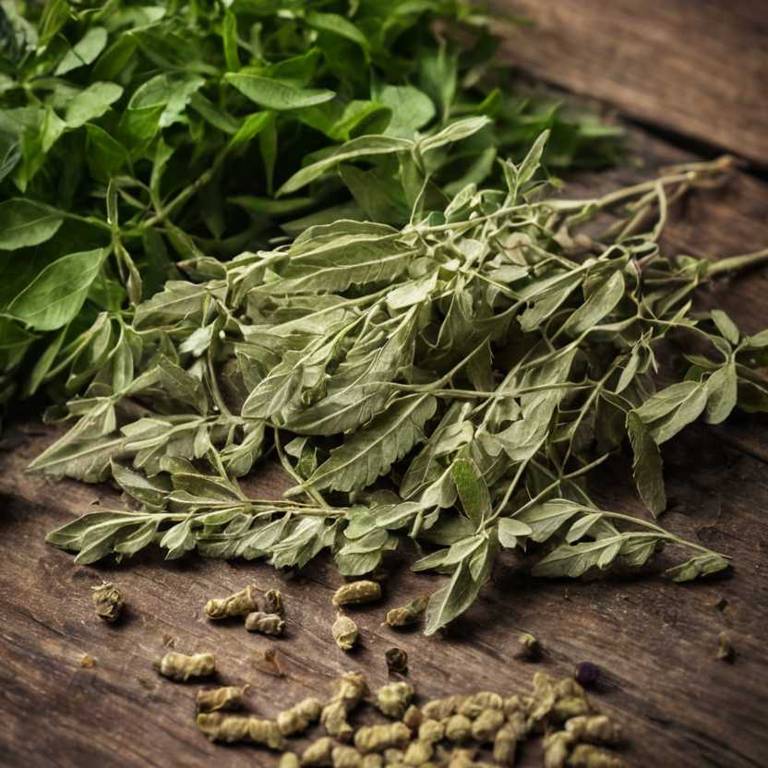By Leen Randell
Updated: Jul 06, 2024
What to know about Alnus glutinosa (black alder) before using it medicinally

Alnus glutinosa, commonly known as black alder, is a plant rich in antioxidants and flavonoids that have been shown to improve cardiovascular health by lowering blood pressure and reducing inflammation.
This versatile herb is also a popular choice for landscaping due to its ability to thrive in wet environments and its tolerance for poor soil quality, making it an ideal choice for hedges and riverbank stabilization. From a botanical standpoint, Alnus glutinosa is a deciduous tree that belongs to the Betulaceae family and is characterized by its conical shape and dark green leaves that turn yellow in the fall.
Historically, the black alder has been referenced in traditional medicine and folk remedies for centuries, with ancient civilizations such as the Greeks and Romans using its bark to treat a variety of ailments.
This article explains the medicinal, horticultural, botanical, and historical aspects of Alnus glutinosa.
What are the medicinal properties of Alnus glutinosa?
Alnus glutinosa helps with various health issues, including reducing inflammation, soothing respiratory problems, and treating wounds. Its antiseptic and antibacterial properties make it useful for skin conditions and infections. The plant's expectorant properties help relieve coughs and congestion.
The active constituents of black alder responsible for its medicinal properties include aldehyde, terpenoids, and flavonoids. These compounds exhibit antioxidant, antimicrobial, and anti-inflammatory activities. The plant's essential oils contain sesquiterpenes, which contribute to its therapeutic effects.
The parts of the black alder plant used for medicinal purposes are its bark, leaves, and roots. The bark contains tannins, which are astringent and anti-inflammatory. The leaves and roots are rich in volatile oils, which are used for their antiseptic and antibacterial properties.
Improper use of black alder can cause adverse reactions, including allergic contact dermatitis, photosensitivity, and liver damage. The plant's active constituents can also interact with medications, such as anticoagulants and diuretics, leading to serious side effects.
Precautions when using black alder medicinally include pregnant or breastfeeding women avoiding its use, individuals with allergies or sensitivities taking necessary precautions, and proper identification and preparation of the plant to avoid contamination and toxicity.
What are the horticulural aspects of Alnus glutinosa?
Alnus glutinosa grow best in full sun to partial shade, and well-drained soils with a pH range of 4.5-7.5. It thrives in moist to wet environments, making it an excellent choice for riparian zones and wetlands. Average annual rainfall of 600-1000 mm supports optimal growth.
Proper planting techniques for Alnus glutinosa involve planting bare-root saplings in late winter or early spring. Space them 3-4 meters apart, and dig a hole 1.5 times the depth of the root system. Water thoroughly and mulch to retain moisture. Avoid overwatering and compacting the soil.
Harvesting tips for Alnus glutinosa focus on timing and method. Harvest cones in autumn when they are mature and dry. Cut the branches, leaving a 20-30 cm stub to promote new growth. Consider harvesting cones in the morning to avoid moisture loss. Regular harvesting encourages repeated fruiting.
Common pests affecting Alnus glutinosa include the black alder psyllid and the spruce bark beetle. Leaf and twig blights, root rot, and canker are diseases frequently found on this species. Regular monitoring and integrated pest management techniques help mitigate these issues, ensuring healthy growth and development.
What are the botanical aspects of Alnus glutinosa?
Alnus glutinosa is a deciduous tree with a conical crown and a straight, slender trunk. It grows up to 30 meters in height and has a broad, rounded crown with a straight, smooth trunk. The bark is dark brown and furrowed with deep grooves.
Alnus glutinosa belongs to the Betulaceae family and is classified as a member of the Alnus genus. Its scientific name, Alnus glutinosa, is derived from the Latin words "glutinosus," meaning sticky, and the suffix "-osa," indicating a type of alder tree. It is further classified as a deciduous, perennial, and dioecious plant.
Several variants of Alnus glutinosa exist, including the white alder, Alnus incana, and the green alder, Alnus viridis. Some sources also recognize the dwarf alder, Alnus glutinosa var. minor, as a separate variant. However, the classification of these variants remains a topic of debate among botanists.
Alnus glutinosa is widely distributed across Europe and Asia, including countries such as the United Kingdom, Ireland, and parts of eastern Europe. It is also found in western Asia and North Africa. The tree thrives in areas with moist, fertile soils and a mild climate.
The life cycle of Alnus glutinosa begins with germination, typically occurring in early spring. The seedling emerges, grows, and develops its root system over several years. The tree reaches maturity after 50 to 70 years and can live up to 100 years in ideal conditions. Regular pruning and harvesting help maintain the tree's growth and productivity.
What are the historical aspects of Alnus glutinosa?
Alnus glutinosa is a deciduous tree native to Europe and Western Asia. Historically, its bark was used to create tar, a sticky substance used for caulking boats and protecting wood from rot.
In mythological references, Alnus glutinosa is associated with Celtic druidism, where its timber was used for sacred rituals. The tree was also mentioned in ancient Greek literature, such as in Theocritus' poem "Idylls".
Symbolically, Alnus glutinosa represents renewal and protection. In traditional European folklore, the tree is believed to offer protection against evil spirits and disease. Its wood is also used in traditional crafts.
Historical texts, such as the 17th-century herbal "De Historia Stirpium" by Leonhard Fuchs, describe the medicinal properties of Alnus glutinosa. The tree's bark was used to treat various ailments, including fever and rheumatism.
Archaeological evidence of Alnus glutinosa usage can be seen in the form of wooden artifacts, such as the discovery of charred alder wood in ancient Greek shipwrecks. These finds demonstrate the tree's importance in ancient maritime activities.